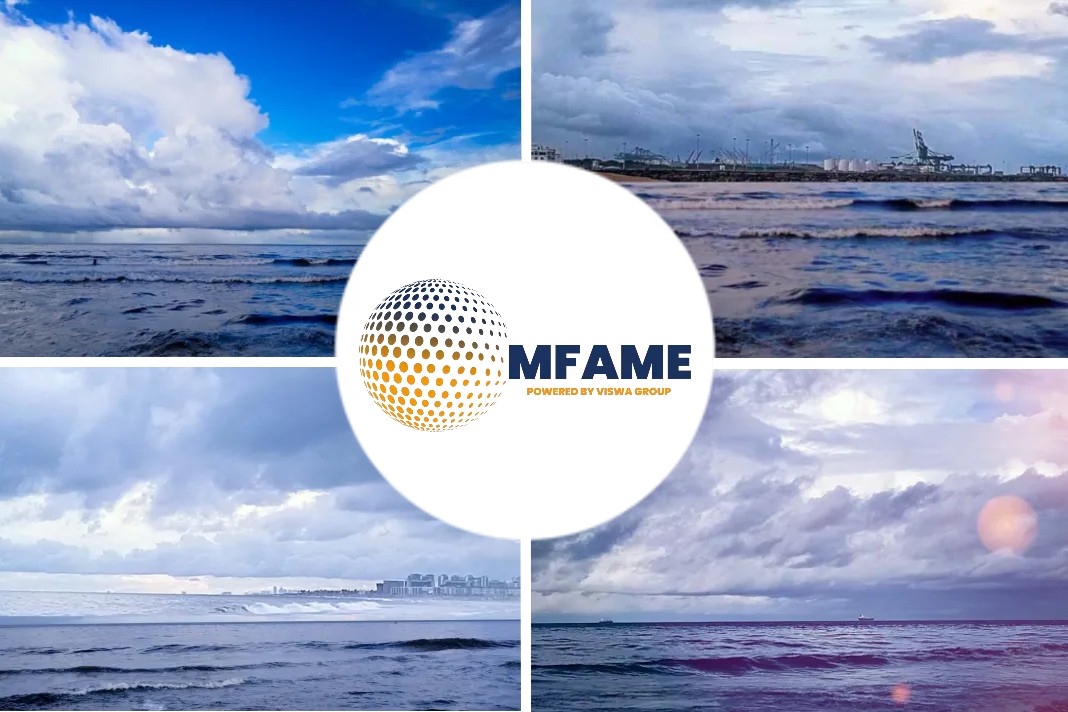 Watching the scramble to be top dog, or rather favourite maritime fuel of the future, is becoming a fascinating habit. Whereas the likes of the major players in the carriage of ocean freight are wisely choosing to trial any and all methods of driving down their emissions, the vested interests for each form of fuel of the future are desperate to become the carriers’ favourite, says an article published on handy shipping guide website.
Watching the scramble to be top dog, or rather favourite maritime fuel of the future, is becoming a fascinating habit. Whereas the likes of the major players in the carriage of ocean freight are wisely choosing to trial any and all methods of driving down their emissions, the vested interests for each form of fuel of the future are desperate to become the carriers’ favourite, says an article published on handy shipping guide website.
Riders or Runners
So if the riders are those vested interests, which are the runners? Take your pick from a host of options, hydrogen, LNG, LPG, methanol, biofuels, reworked or scrubbed heavy fuel oil, wind assisted rotor power etc. A host of big names have signed up to the Methanol Institute, including Maersk, Stena Bulk, MSC, MOL and Oldendorff Carriers, but these are all also considering the many alternatives.
Move to methanol
Speaking at a recent virtual conference, Greg Dolan, CEO of the Methanol Institute, predicted that his horse was likely to fall in price (both in actual terms and figuratively) as the production costs drop away to become more competitively priced than traditional diesel bunker and other alternative fuels. Dolan suggested that the move to methanol would also help ship owners avoid the proposed carbon tax on diesel, which could be between US$250 and $450/tonne of CO2.
Dolan says that, as a transitional fuel, methanol is supported by the International Maritime Organization (IMO) in its recent adoption of safe handling guidelines under the IGF Code for low flashpoint fuels. He claims methanol production increased last year to 100Mmt, doubling production in a decade. He said production could reach 500Mmt by 2050, as predicted in a joint Methanol Institute/International Renewable Energy Agency report released earlier this year, continuing:
“There’s a call by many including the world’s largest shippers for a carbon tax on diesel fuels. That would dramatically change the pricing picture for marine fuels and the only available alternative fuel options today are advanced biofuels, LNG and methanol. [The IMO endorsement] has been an important milestone in the growth of methanol as a marine fuel, and while LNG paved the way for methanol, methanol adoption can be a model for ammonia and hydrogen in the future.”
Methanol-burning vessel
Maersk announced in March that its first methanol-burning vessel will launch in 2023, seven years ahead of schedule. The company also mooted an order for twelve 15,000 TEU methanol-fuelled containerships.
Another advocate is Proman Stena Bulk. The joint venture between ship owner Stena Bulk and methanol producer Proman is planning to build six 50,000 dwt tankers with methanol dual-fuel engines for delivery in 2023.
A further three vessels owned solely by Proman, scheduled for delivery in 2022 and 2023, will be traded globally for shipping chemicals and clean petroleum products. Proman claims methanol is currently being traded at a price lower than LNG in some ports, and is less to bunker than biofuel, currently traded at US$1,200/tonne or more.
Cost
Anita Gajadhar, Managing Director Proman Marketing, Logistics and Shipping, said: “For us, methanol is a proven fuel capable of meeting the shipping industry’s carbon reduction targets. When you look at the long-term pricing, it is competitive when compared to alternatives, like MGO. It is easy to bunker, it is safe to bunker, and it is widely available as bunker in 122 ports. Methanol is actually going to be a little bit cheaper than some of the biofuels that are available in the market today. In terms of CAPEX, it is also a lot cheaper to modify vessels for methanol than it is for LNG.”
Methanol-fuelled new builds also cost less than a LNG-burning ship, according to engine builders MAN Energy Solutions and Wärtsilä. Kjeld Aabo, Director New Technologies two-stroke promotion at MAN ES, told attendees that a 54,300 m3 capacity product tanker running a methanol-fuelled engine would add about 10% to the new build price. The same vessel running on LNG would cost 22% more than a conventional HFO-burning ship.
Methanol dual-fuel engine
The engine builder, which first unveiled and tested a methanol dual-fuel engine in 2016 and has a current order book of 23 ME-LGIM engines, said methanol combustion emits 8% less CO2 than an HFO Tier II engine. SOx emissions are reduced by 97% and NOx up to 60%.
And since the methanol molecule contains no carbon-carbon bonds, it does not produce particulate matter or soot when burned, resulting in smokeless operation.
While Wärtsilä introduced a methanol engine in in 2013, Stojcevski revealed that the engine builder expects to have an ammonia-fuelled engine operating next year and a pure hydrogen engine in 2025. The company also plans to launch a new methanol-burning engine based on its proven W32 series in late 2023. This will be available for new builds and retrofit.
Summary
- Major players in the carriage of ocean freight are wisely choosing to trial any and all methods of driving down their emissions, the vested interests for each form of fuel of the future.
- The move to methanol would also help ship owners avoid the proposed carbon tax on diesel, which could be between US$250 and $450/tonne of CO2.
- The move to methanol would also help ship owners avoid the proposed carbon tax on diesel, which could be between US$250 and $450/tonne of CO2.
- The engine builder, which first unveiled and tested a methanol dual-fuel engine in 2016 and has a current order book of 23 ME-LGIM engines.
Did you subscribe to our daily newsletter?
It’s Free! Click here to Subscribe!
Source: handyshippingguide

















